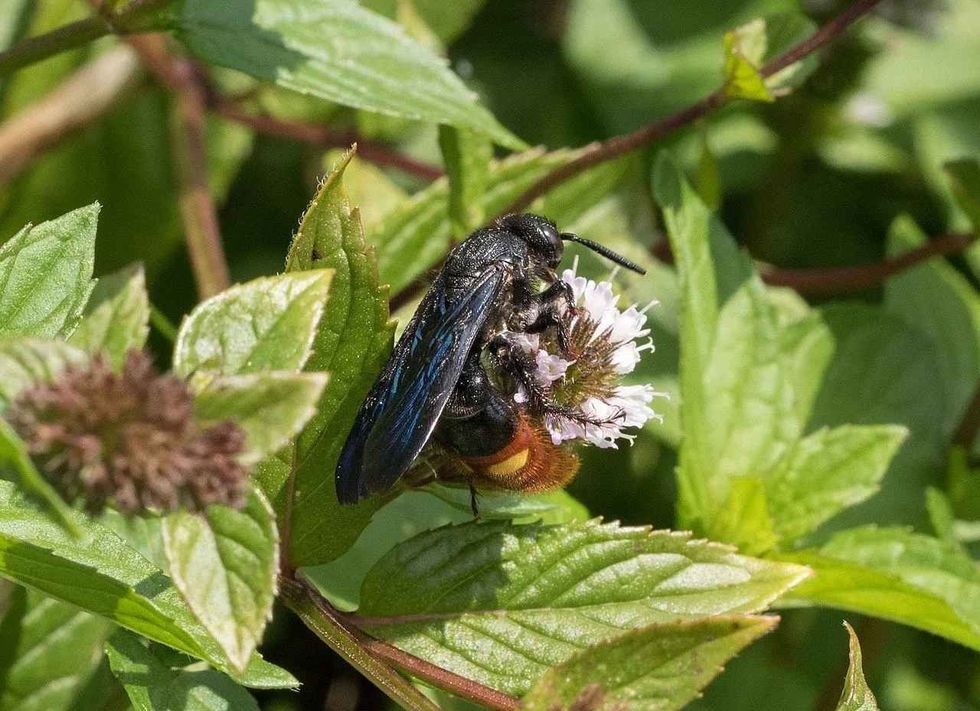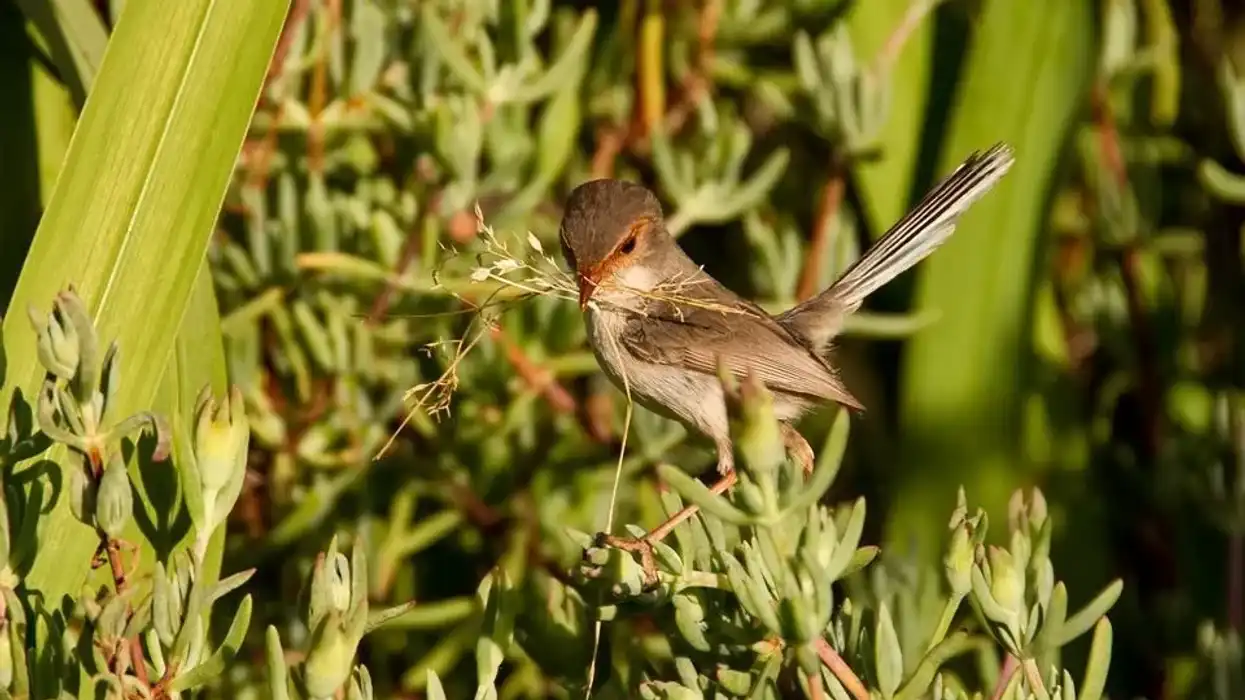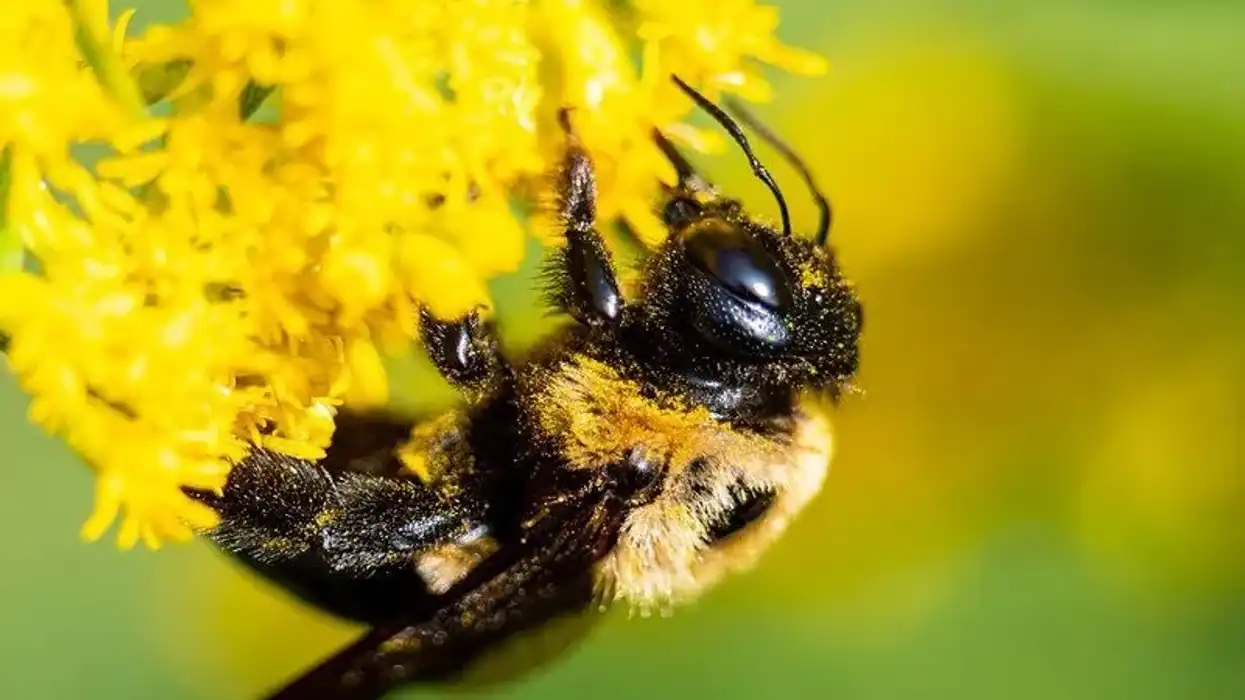You have probably seen wasps flying around your home or neighborhood.
Scolia dubia, also known as the two-spotted scoliid wasp or the blue-winged scoliid wasp, is a North American wasp species that can be found from New England to Florida and west to the Rocky Mountains. Blue Winged Wasps are black insects with light yellow spots or other marks that are relatively broad, sturdy, and somewhat hairy.
As per the North Carolina Agricultural Extension Service, Scoliid Wasps are generally regarded as useful insects because these wasps aid in the containment of green June beetles, Japanese beetles, and other beetle grubs as well.
Here are some interesting facts about the blue-winged wasp (Scolia dubia) that you will surely enjoy. Afterward, do check out our other articles on red paper wasp facts and ladybird facts as well.
Blue Winged Wasp Interesting Facts
What type of animal is a blue-winged wasp?
Blue-winged wasp (Scolia dubia) is an insect species that is found in North America. These insects have two distinct yellow spots on their bodies and are also known as Scoliid wasps. Their diet comprises green June beetle grubs and Japanese beetle grubs
What class of animal does a blue-winged wasp belong to?
Blue-winged wasp (Scolia dubia) belongs to the Insecta class of animals. These winged wasps look extraordinary as these wasps appear like they have a blue light fit in their internals.
How many blue-winged wasps are there in the world?
No specific number has been recorded for their population. Since these wasps lay eggs in dozens and die soon, it’s difficult to keep track of them.
Where does a blue-winged wasp live?
Blue-winged wasps live in nests in a tree that these wasps build in groups for storing their eggs and food.
What is a blue-winged wasp's habitat?
This wasp is found within the southern half of the US in temperate environments. A grub-infested soil might be a significant situation.
For example, large numbers of this species are associated with large numbers of the dicot genus Nitida, the inexperienced May bug. These wasps are generally discovered in parks, meadows, or lawns wherever grubs are numerous and simple to find.
Who do blue-winged wasps live with?
Blue-winged wasps sometimes live in groups. Male wasps can be seen in groups of around a dozen flying low to the ground. This species is active during the day and only active above ground during the summer months, with peak activity in mid-to-late summer.
How long does a blue-winged wasp live?
The larvae of wasps only live for one season after hatching from cocoons. Blue-winged wasps only live as adults for 4-5 months.
How do they reproduce?
Mating dances have been observed in both sexes of Scolia dubia. These dances involve flying in figure-eight patterns inches above the ground.
Eggs hatch on grubs that have been paralyzed by their mother. The larva consumes the grub for about a week before spinning a cocoon. The wasp most likely overwinters as a pupa and emerges as an adult after around three weeks.
What is their conservation status?
Scolia dubia is widespread and abundant throughout its range. Because of its rarity, this species is likely to be of the least concern and does not require any significant conservation efforts.
Blue Winged Wasp Fun Facts
What do blue-winged wasps look like?
Adults feature bluish-black heads, thorax, and fore abdomen, as well as black antennae. On either side of the abdomen, a yellow stain may be visible (absent sometimes). Blue-winged wasps derive their name from the fact that their black wings seem blue under certain lighting conditions.
Their bodies are hairy, and their abdomen is brownish with red hairs beyond the spots. All of the antennae, maxillary palps, and labial palps are one-segmented.
A slit-like silk gland can be seen on the labium. The larva is a white grub with no legs and a brown head. Blue-winged wasp identification is possible, and easy, with the help of its two bright yellow spots.
How cute are they?
These wasps look so adorable with their yellow spots, especially when they are sucking nectar from flowers these wasps look extremely beautiful.
How do they communicate?
To interact with and attract partners, this species performs a courtship dance that consists of flying in a figure-eight pattern. To communicate with and attract partners, this species performs a courtship dance that consists of flying in a figure-eight pattern.
They know the opposite sex due to a minor sexual dimorphism in antennae length, as well as the use of pheromones.
How big is a blue-winged wasp?
Blue-winged wasp size is 10 times bigger than the smallest insect firefly. This blue-black pest species' range of size is around 0.7 in (1.7 cm).
How fast can a blue-winged wasp fly?
This blue-black pest species can fly at speeds of around 25 mph (40 kph).
How much does a blue-winged wasp weigh?
A blue-winged wasp weighs around 0.0056 oz (0.00015 kg).
What are the male and female names of the species?
There are no specific names for male and female blue-winged wasps. This blue-black pest species' males is known as male blue-winged wasp and females are known as female blue-winged wasp.
What would you call a baby blue-winged wasp?
A baby blue-winged wasp is simply called wasp larvae.
What do they eat?
Blue-winged wasp larvae feed on the grub of the green June beetle (Cotinis nitida) and the Japanese beetle (Popillia japonica). Females dig through the soil and paralyze a grub, which acts as the main food supply for larvae. Adults consume nectar from goldenrod flowers as well as other blooming flowers.
Are they dangerous?
Blue-winged wasps sting humans only occasionally and are not aggressive toward humans until provoked.
Would they make a good pet?
If you own a lawn and have a lot of beetle grub around it, the blue-winged wasp would make a great pet as Scoliid wasps eat them to survive.
Did you know...
Scoliid wasps have compound eyes and antennae that enable them to perceive their surroundings.
Wasps have shown their ability to use logic. Scoliid wasps will decide by combining two facts. This is thought to be the first evidence that invertebrates can use rational inference.
Is blue-winged wasp aggressive?
The female blue-winged wasp will bite, and handling one may trigger a protective response, but the species is otherwise considered non-aggressive.
How to get rid of blue-winged wasps?
Find the blue-winged wasp nest and destroy it with chemicals or call a professional to get rid of the giant blue-winged wasp.
Here at Kidadl, we have carefully created lots of interesting family-friendly animal facts for everyone to discover! For more relatable content, check out these woolly bear facts, or yellow fly facts.
You can even occupy yourself at home by drawing one on our Blue Winged Wasp coloring pages.









